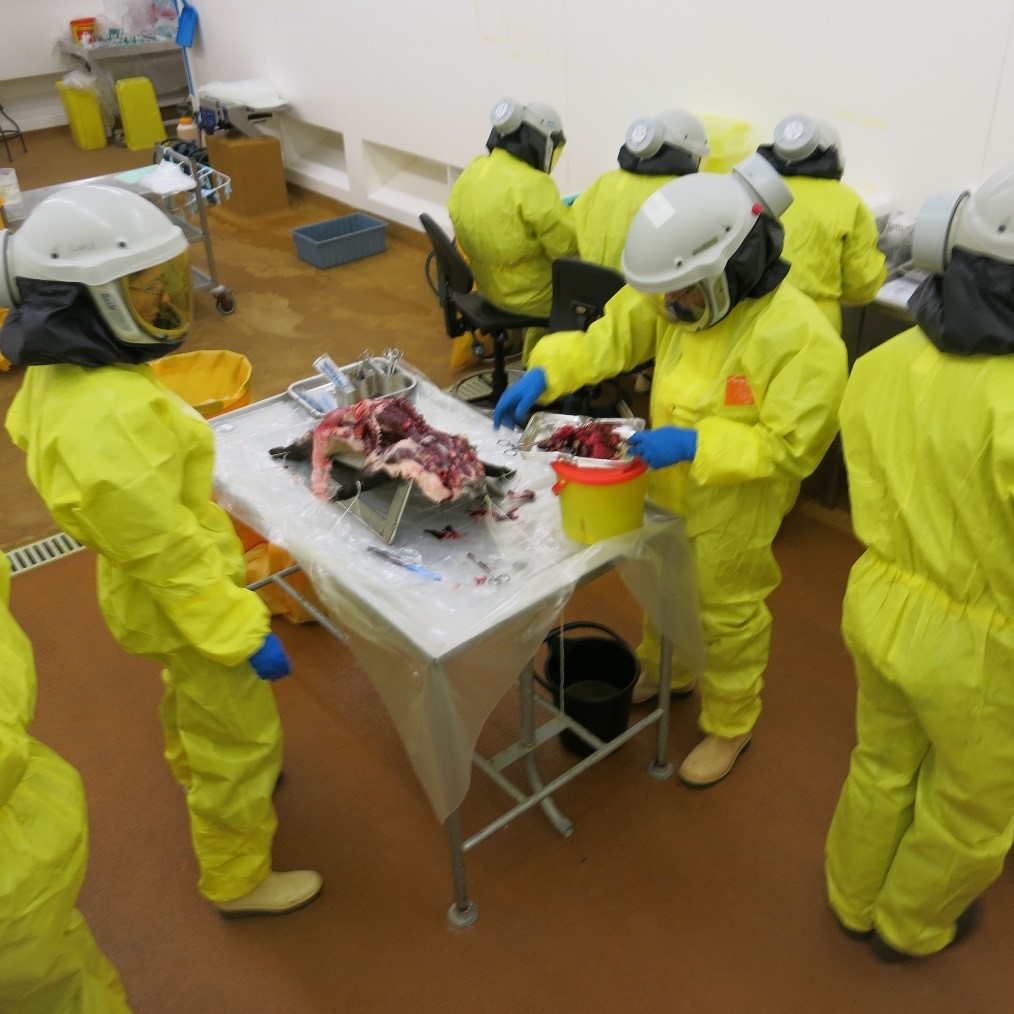Tackling bird flu in the UK
The UK and Europe are currently tackling the longest and largest series of avian influenza outbreaks, posing a serious threat to wild bird populations and people’s livelihoods. Here, veterinary virologist Dr Sharon Brookes describes the work of the Animal and Plant Health Agency in response to this outbreak.
Avian flu is causing systemic disease in birds globally. In the UK, threatened bird species like roseate terns, puffins, seal eagles and hen harriers have been affected, as well as poultry farms and wild bird populations.
As a veterinary virologist based at the Animal and Plant Health Agency (APHA; in the Department for Environment Food & Rural Affairs), with a primary interest in how viruses develop and cause disease, my work has encompassed disease pathology of a range of host animal species working closely with our veterinary pathologists. Most of my time at the APHA has involved working with animal influenza A viruses, both swine and bird flu.
Avian influenza viruses (AIV) cause bird flu in poultry and wild birds. The arrival of AIV is normally connected to wild bird migration in the autumn and winter months. The current 2021/22 outbreak of H5N1 (a strain with high pathogenicity [HP], i.e. a high ability to induce disease) started at the end of October 2021. The peak risk period for AI outbreaks is between December and February and case numbers reduce with in-country population control of infected poultry and kept birds (pets and collections) and decline of incoming migratory birds.
The last few years have seen an escalation of [avian influenza virus] incursions infecting more poultry, a wider range of wild bird species and even crossing over to mammals, including a single case in humans.
At the APHA we are responsible for UK government science expertise on AIV and for providing all the testing and diagnoses. APHA offers the scientific evidence for disease confirmation and undertakes the epidemiological response to the disease in the field. These activities support decisions to enable fast and effective control of this notifiable disease. Surveillance is also necessary for the UK to become disease free again (in seasons prior to this one) and be able to re-start international trade of poultry products. The APHA have expert virologists, bioinformaticians, epidemiologists, veterinarians, field staff, risk analysts and modellers to coordinate our scientific response to help stop further spread of this important disease.

The last few years have seen an escalation of AIV incursions infecting more poultry, a wider range of wild bird species and even crossing over to mammals, including a single case in humans. As of 15 September 2022, we were at day 321 of the ongoing outbreak with 144 cases declared and over 1,649 detections of AIV in wild birds in 392 locations, involving 57 species in 82 counties, including conservation and predator bird species.1 This represents a significantly greater detection of HPAIV in poultry and captive birds than previously reported in 2020–2021 (26 cases) and 2016–2017 (13 cases).
It is important to raise awareness of how to diagnose the disease through an understanding of how it affects the birds’ organs and tissues.
Globally, HPAIV H5N1 is widely dispersed, causing outbreaks in Europe, North America, Asia and Africa, affecting people’s livelihoods and wildlife conservation. It is important to raise awareness of how to diagnose the disease through an understanding of how it affects the birds’ organs and tissues. This will improve investigations, for example realising pathognomonic signs following natural infection. HPAIV H5N1 in poultry species, such as chickens, turkeys, ducks or geese, or captive or wild birds, including mute swans, tufted ducks, jackdaws or white-tailed eagles, typically causes tissue damage in the pancreas and spleen.2 Interestingly, the disease usually appears to be more severe in poultry than wild waterfowl.
The close linkages between the APHA and the Public Health Agency (UK Health Security Agency) have facilitated active surveillance among people exposed to the HPAIV, which enabled the detection of HPAIV H5N1 in an asymptomatic human case during the current avian influenza season.3 Russia reported infection in poultry workers with H5N8 during 2021.4 However, it should be noted that, despite extensive global avian–human interaction, cases of H5 AIV detected in people are very rare.
... despite extensive global avian–human interaction, cases of H5 AIV detected in people are very rare.
H5 AIVs have also been detected in mammals. HPAI H5N1 virus infections (2021–2022) have been detected in wild red foxes across Europe.5 In late 2020, a wildlife rehabilitation centre in the UK reported that there had been deaths of young seals and a red fox. These deaths were associated with HPAI H5N8 infection.6 In August 2021, HPAIV H5N8 infection was detected in three adult harbour/common seals found at the German North Sea coast.7 Interestingly, neurological signs were reported for several of these mammals and the virus was detected in brain tissue with limited or no detection in the respiratory tract and other organs. For mammals, the most probable route of infection is consumption of contaminated water, faeces or scavenged infected bird carcasses. In North America, the mammals infected with H5 AIV include red fox, coyote, skunks, otters, a lynx and a polecat.
These cases highlight the importance of HPAIV disease investigations and surveillance in poultry and wild birds, and mammals including humans, to monitor the hazard, threat and risks to safeguard animal, environmental and public health.
With thanks to Professor Ian H Brown (avian influenza disease consultant), Dr Alejandro Nuñez and Fabian ZX Lean (veterinary pathologists) and Mr Scott Reid (avian virology lead from APHA).
For additional information, see APHA Science Blog.
